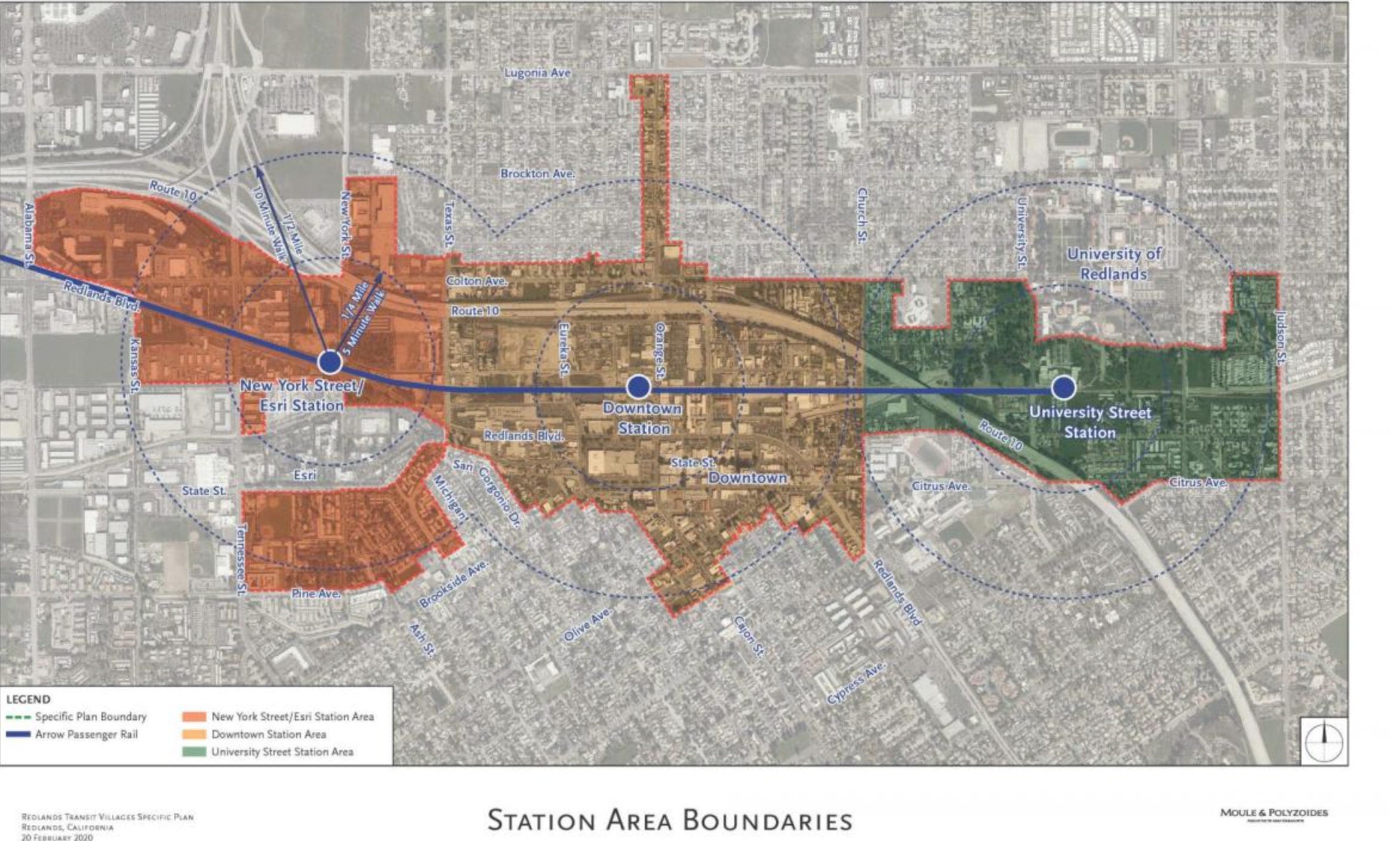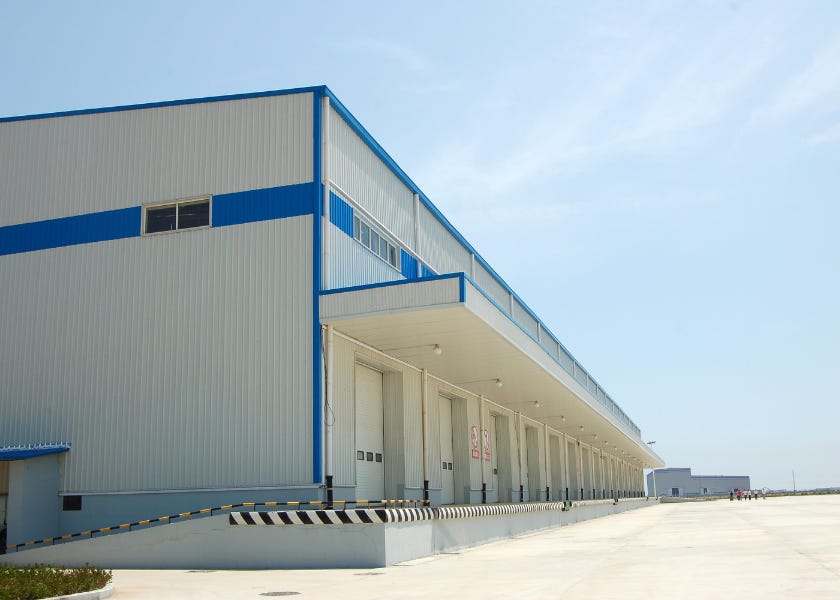Color explosion and social commentary at Redlands gallery in July
Local artist Rick Cummings blends humor, empathy, and social critique in a vibrant mixed media exhibit at Redlands Art Association, on view in July
Plus what Measures F and J could mean for development in Redlands.

Redlands, Calif. - Election day is next Tuesday. In our final newsletter covering local election issues, we're looking at two ballot measures in Redlands:
The origins of Measure F have been widely reported by the local news. Here’s a quick recap with links.
It started with a petition by Redlanders for Responsible Growth Management in the fall of 2020 to limit building height near downtown and the University station to three stories. The members of the group, wearing bright yellow shirts labeled “no high-rise,” collected more than 7,000 signatures.
In August 2021, the City Council agreed to put the initiative - Redlanders for Responsible Growth Management (RRGM) Initiative Ordinance - up for vote in the 2022 general election.
At the same time, representatives from the University of Redlands shared their concerns that if the initiative passed it would significantly hurt the University’s future.
By June, a new proposal, now known as Measure F, was negotiated between the University of Redlands, the author of the original initiative, former Redlands mayor Bill Cunningham and the Redlands City Council. Among other things, the new measure includes a building height exception for the University Village and a provision to further preserve areas of the San Timoteo Canyon.
For a time, both measures were set to be on the November ballot. Then in August, the RRGM Initiative was pulled by Cunningham.
Next week, voters will decide on building height in downtown Redlands based only on the modified Measure F. If Measure F fails, all the current zoning and development rules will remain in place.
The two most significant impacts of Measure F are limiting building height in areas near the downtown train stations to 3-stories and further preserving areas of the San Timoteo Canyon.
To better understand how Measure F would impact current and future development plans, I spoke to the City’s Director of Development Services, Brian Desatnik.
When RRGM began to draft their original initiative, the zoning that was in place in a lot of downtown Redlands had no height limit, “you could have technically built an 8-story building downtown under the old zoning as long as it maintained the floor-area-ratio,” Dasatnik explained. A floor area ratio limits urban density but could allow a building to go higher if the footprint on the parcel was smaller. However, after the City Council approved the Transit Villages Specific Plan (TVSP) last month there is now a specific height limit of four stories.
The map below shows the Transit Villages Specific Plan where a limit of four stories or 55 feet is now in place.

If passed, Measure F would put additional building height limitations beyond what’s now required in the TVSP in downtown Redlands including:
Here’s a look at how Measure F would impact current and proposed development if passed.
Without the original RRGM initiative on the ballot, the University of Redlands is not dependent on Measure F to develop University Village. Desatnik confirmed that regardless of whether Measure F passes or fails, the University of Redlands will be able to move forward with its current development plans. If Measure F fails, the University could apply for an exemption from current Measure U building height restrictions through the provision that allows for an exemption for projects related to rail stations. This is how the State Street Village project was able to move forward. It’s important to note that before the original RRGM Initiative was pulled from the ballot, University stakeholders needed Measure F to pass.
If Measure F passes, it will not impact the newly approved mixed-use developments including the City Center Project, the Grand, and the State Street Village (old Redlands mall project) because all three have already been approved by City Council.
Measure F would limit future high-density, mixed-use developments over three stories downtown, even if they are near a train station.
One provision of Measure F allows hotel height within the City’s Transit Village to be determined by City Council. However, regardless of whether Measure F passes or fails, the City Council will be limited in their determination of hotel height by the newly passed Transit Villages Specific Plan, which, again, currently limits building height downtown to four stories.
Measure F also prohibits most buildings more than two stories from being built near single-family residences. This aspect of the measure has already been approved in the Transit Villages Specific Plan.
Much of the original support for Measure F grew from a desire to respect the goals of the original RRGM petitioners, while also addressing the development needs of the University of Redlands. Measure F was the compromise. In the official support of Measure F, proponents wrote, “Measure F will enhance the quality of life of Redlands residents by placing restrictions on development to preserve our Redlands community while balancing the need for increased housing and access to the rail line for families and employees.”
Supporters of Measure F argue that it will preserve both the historic charm of downtown Redlands and the natural beauty around the city. If Measure F passes, areas in the San Timoteo Canyon designated as A-1 agricultural land cannot be rezoned unless approved by voters.
According to City officials, there is currently no discussion of rezoning in areas of the San Timoteo Canyon.
Measure F has drawn opposition from two different camps, both citing concerns over density.
Supporters of higher density downtown - up to 4 stories as defined by the TVSP - are in opposition to Measure F. City Councilmember Denise Davis, who is up for reelection in District 1, was involved in crafting the modified Measure F. She voted to get the measure on the ballot as an alternative to the original initiative. After the original initiative was pulled, I asked if she supports Measure F. This is what she told me: “I supported putting Measure F on the ballot because the previously proposed measure would have hindered the University Transit Village. However, Measure F isn’t perfect. I didn’t vote for it because I think our current situation is better than some of the proposed restrictions that F would impose.”
Those who believe four-story buildings near the University train station are too high and too dense, opposed Measure F right away. In the official argument opposing Measure F, supporters of the original RRGM initiative wrote, “The University project is too tall and dense for our sleepy streets. We didn’t buy here so developers could destroy our American dream.” In September, a political action group “Save Redlands - No on F” began putting up yellow “NO on F” signs around town.
Others believe it is not what the original petitioners intended. Candidate Tom Berg, running for Redlands City Council District 1, wrote that he’s opposed to Measure F because he believes it disregards the wishes of residents. “Construction of tall “stack and pack” buildings in downtown is not the desire of the voters. And they are not the desire of District 1 voters because they are not family-friendly and because they may relegate the citizens to having to use bicycles and mopeds for transportation,” wrote Berg. And while he opposes Measure F, he said he’s pro-growth and in favor of the University Village.
As stated earlier in this article, the University Village project can move forward regardless of whether Measure F passes or fails.
An additional reason some oppose Measure F is that it could face legal challenges from developers, property owners, or the State of California. According to city officials, this provision likely violates SB330 by downzoning land that allows residential development. The City submitted a report outlining the ways the measure conflicts with state law.

Next week voters will decide whether to raise the business license tax for warehouse distribution centers in Redlands.
If the new tax increase passes, it will be one of the highest rates for warehouses in the region. The current tax rate for distribution centers in the City is about four cents ($.047) per square foot. Measure J would increase the rate to about ten cents ($.107) per square foot.
This change in rate will result in $530,000 in annual revenue for the general fund. When I spoke to Mayor Pro Tem Eddie Tejeda for an article about warehouse development in Redlands, he explained that the money generated from the tax will go into the City’s general fund. However, he wants to see the revenue used to address the environmental impacts that the warehouses have on the City. Mayor Pro Tem Tejeda wrote the argument in favor of the measure.
The city clerk did not receive an argument against the measure.
Because demand for warehouse development is so high an increased tax rate is unlikely to impact new warehouse construction, according to city officials.
You can read more about the impact of warehouses on our region in this edition of Community Forward Redlands “Redlands Responds to Regional Warehouse Boom.”
Cast your vote by next Tuesday, November, 8.
Sign up for our weekly newsletter